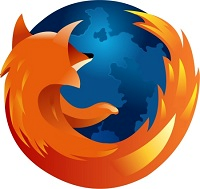Wikipedia dicit:
Lucy is a planned NASA space probe that will tour five Jupiter trojans, asteroids which share Jupiter’s orbit around the Sun, orbiting either ahead of or behind the planet and one main belt asteroid. All target encounters will be fly-by encounters.
On 4 January 2017, Lucy was chosen, along with the Psyche mission, as NASA’s Discovery Program missions 13 and 14 respectively. The mission is named after the ‘Lucy’ hominid skeleton, because the study of Trojans could reveal the “fossils of planet formation”: materials that clumped together in the early history of the Solar System to form planets and other bodies.
Lucy is planned to launch in 2021. In 2025 it will fly by the inner main-belt asteroid 52246 Donaldjohanson, which was named for the discoverer of the Lucy hominid fossil. In 2027 it will arrive at the L4 Trojan cloud (a group of asteroids that orbits about 60° ahead of Jupiter), where it will fly by four Trojans, 3548 Eurybates, 15094 Polymele, 11351 Leucus, and 21900 Orus. After these flybys, Lucy will return to the vicinity of the Earth whereupon it will receive a gravity assist to take it to the L5 Trojan cloud (which trails about 60° behind Jupiter), where it will visit the binary Trojan 617 Patroclus with its satellite Menoetius in 2033.
Three instruments comprise the payload: a high-resolution visible imager, an optical and near-infrared imaging spectrometer and a thermal infrared spectrometer. Exploration of Jupiter Trojans is one of the high priority goals outlined in the Planetary Science Decadal Survey. Jupiter Trojans have been observed by ground-based telescopes and the Wide-field Infrared Survey Explorer to be “dark with … surfaces that reflect little sunlight”. Jupiter is 5.2 AU (780 million km; 480 million mi) from the Sun, or about five times the Earth-Sun distance. The Jupiter Trojans are at a similar distance but can be somewhat farther or closer to the Sun depending on where they are in their orbits. There may be as many Trojans as there are asteroids in the asteroid belt.
Video Credit: NASA Goddard









 Subscribe to our RSS feed
Subscribe to our RSS feed











There are no comments.
Add A Comment